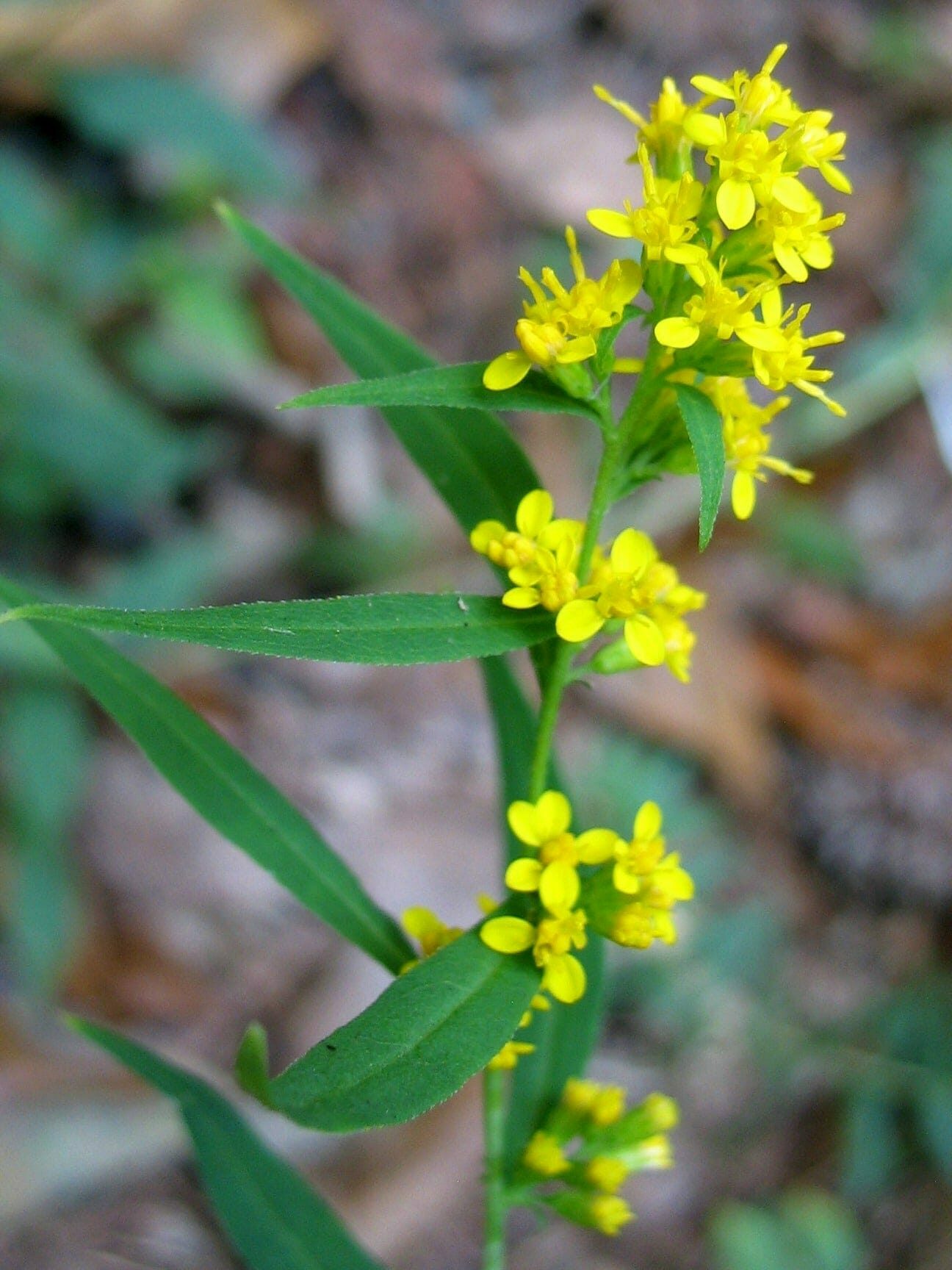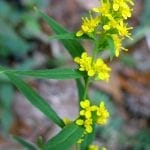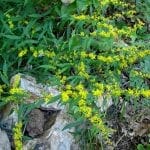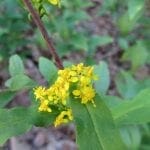- Flowers
- Habit
- Blue stems
- Flowers
Scientific Name:
Blue-stem Goldenrod (Solidago caesia)
Common Name:
Blue-stem Goldenrod (Solidago caesia)
Scientific Name Pronounciation:
so-li-DAY-go KAY-see-uh
Plant Type:
Perennial
Plant Hardiness Zones:
3-9
Plant Hardiness Zone(s):
Usual Size:
1-3 ft H
Flower:
Yellow, found in the axils of the leaves
Bloom Time Notes:
Fall
Leaf:
Dark green alternate, lance shaped leaves extend the entire length of the stem.
Fruit:
A seed.
Wildlife:
Used by short-tongued bees. The caterpillars of many moths feed on the foliage.
Natural Habitat:
Open woods; wood borders; clearings.
Propagation:
Seed, division.
Bloom Time:
Sun or Shade:
Companion Plants:
Cultural Notes:
Blue-stem Goldenrod (Solidago caesia) is distinguished by a smooth, purplish-blue stem (more so with age) and flowers that are found in clusters along the top half of the stalk, creating small, graceful, arching sprays. This goldenrod is perfect for part shade areas and pairs well with Southern harebell (Campanula divaricata) which blooms around the same time.
A species with similar flower arrangement is Zigzag Goldenrod (Solidago flexicaulis) but that is much less common and has wider leaves.
Contrary to popular belief, goldenrod is not a source of fall allergies because its pollen is not light enough to be transported on the wind. Goldenrods are insect pollinated and highly sought after by native bees and butterflies for pollen and nectar. Fall allergies are associated with wind-pollinated plants such as ragweed (Ambrosia artemisiifolia), an annual plant with greenish flowers that is often unnoticed.
Other Common Names: Wreath Goldenrod
Other Scientific Names: Solidago axillaris, Solidago caesia var. axillaris, Solidago caesia var. caesia





